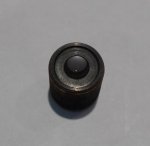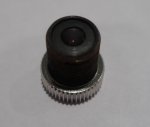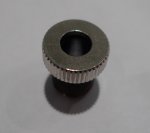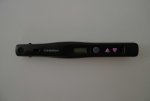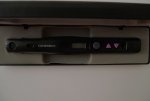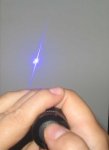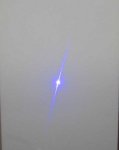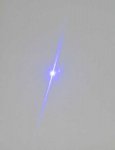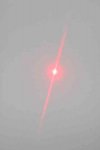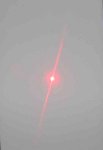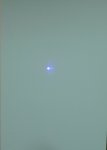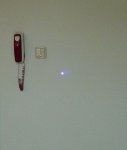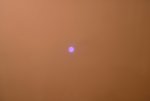Removable Correction Ring (read this/very important)
----------------------------------------------------
The idea is simple: i will not add another lens inside instrument case (to expensive) to correct the output, but ... at lower cost, I can add a ring on output, much cheaper, if the actual lens/design allow/support this feature.
For those paranoids, which want a better shape, exist this option: removable correction ring for this lens!
Don't be laid about false idea, regarding power loss when you are decreasing the aperture of this instrument case ... this ring has been designed for this unit (instrument case + lens) and normally, will cut off un-needed/garbage light. attenuation should be under 7% (as average).
Pros:
- a better output shape (at lower costs than other complicated/expensive solutions)
- can be removed anytime you want!
- use it when you are collimating at shorter distances (few meters away)
Cons: practically, will decrease the output with 6-8% (because we are mounting diode manually, and will not be perfect aligned)
For example:
- the red pointer above, 131mw AX plastic, 157mw ALX glass, will produce 151mW with ALX glass with correction ring. Does it mean, 5.5% less output power.
- the blue pointer, which above proced 110mw with AX plastic and 140++mW with this lens, will produce 131mW with attached correction ring but better output shape. Does it mean, 8% less output power.
Is this decrease (6-7% less), a real loose? Will affect energy used by my pointer? In our scenario, I don't think so. Why?
As you can see from pictures attached, the spot produced by other lens (AX/plastic, AX glass, etc), are not round and is a lot of other light near the spot. Does it mean that when you are measuring the output power and put your LPM in front of your pointer (laser diode), you are measuring .... let say a total: usefull energy + some energy near your round spot. From this total, only a part will be usefull.
Cutting off SOME FROM THIS unneeded energy around dirty spot (controlling the output of the unit) will not affect the power of your pointer (because there, inside spot, energy remain unchanged). You will count a decrease in total power, but this will be against dispersion and not against the real power of your pointer. Of course, optimal is to find a way to be able to use entire power (using more optics, other light sources, etc) - not an option for us due to its higher costs.
Also, this ring (together with my unit) is a good method to test quickly, if your diode is mounted correctly inside your AX/DX case. Just use it, and if you are getting more than ... let say 10% attenuation, you have definitely a bad mounted diode inside your housing module or a really a bad laser diode (defective radiation shape). Don't expect miracles. Nobody can help you!
Ring price? I really don't know. I ordered just 2 rings for me (has not been cheap). Also, AX/DX rings are not the same/standard, and will be very difficult to design a patch for those rings here. I will produce it here. And... that is the reason I don't know the cost. Factory which designed above unit (instrument case + lens) is very expensive due to its quality. Also, till now, our main target has been the lens and instrument case, not this gadget. We will see in the next weeks, how things are going regarding this ring.





